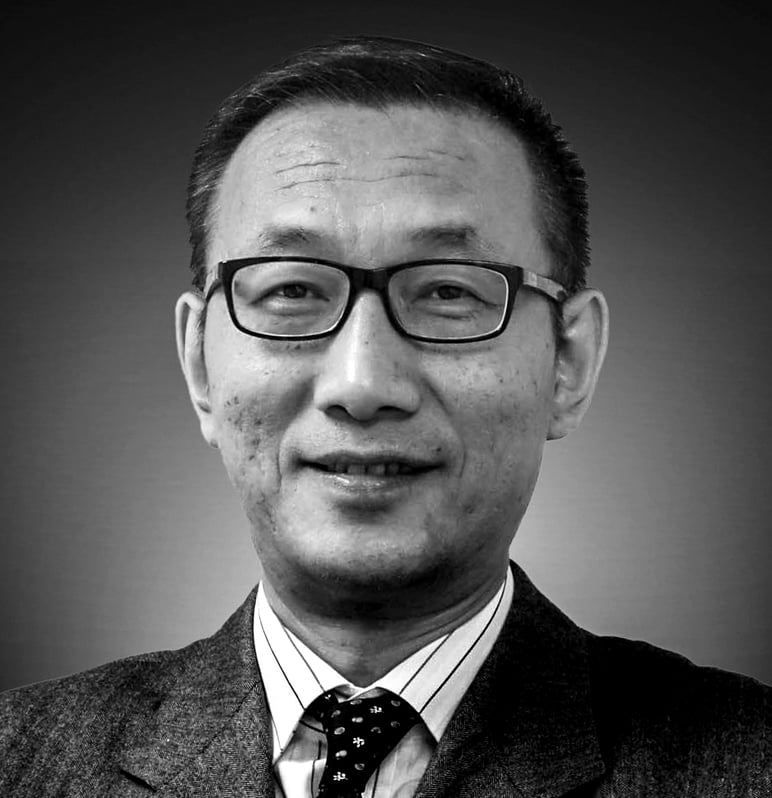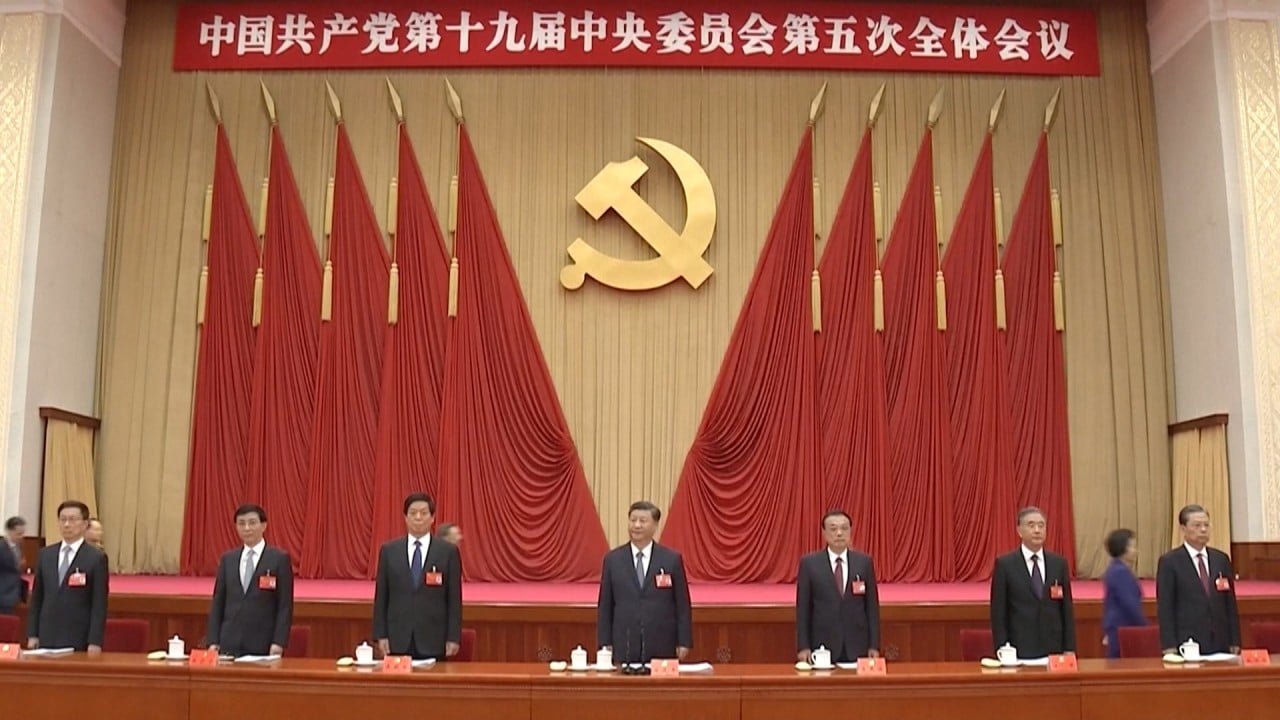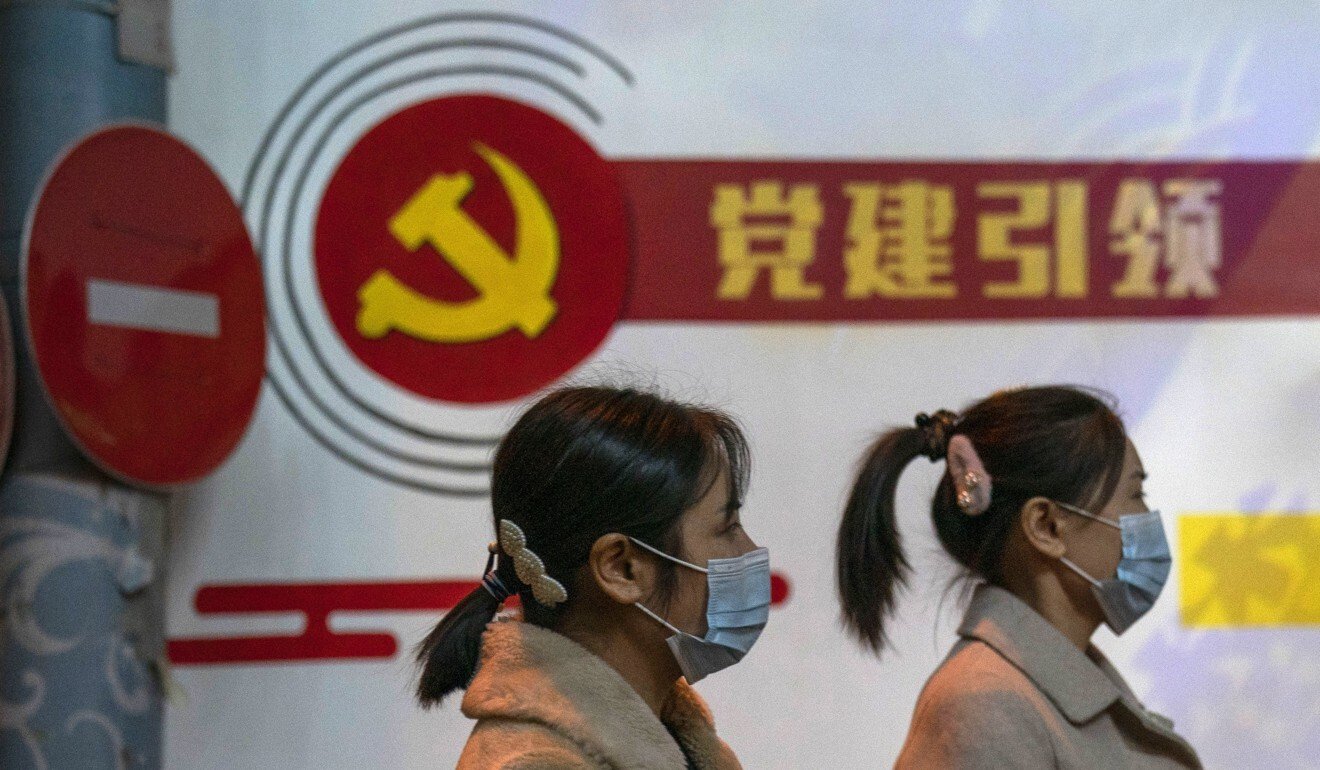
As China-US ties worsen, Beijing has doubled down on modernisation – with Xi at the helm for years to come
- This week’s meeting of the Chinese Communist Party’s Central Committee highlights the confidence and ambition of the aim to build a ‘modern socialist country’
- China’s plan for 2035 – pushing forward as other major economies stumble in their handling of the pandemic – is closely linked to Xi’s personal ambitions
The contrast cannot be any starker.
On Thursday evening, the Chinese leadership’s confidence and ambition were on full display with the release of broad guidelines to build the country into “a modern socialist country” by approving the draft proposals for formulation of the next-five year plan, for 2021-2025, and a long-term vision to be attained by 2035.
The details of the five-year plan and the 2035 vision will be fleshed out in the run-up to the annual plenary session of the National People’s Congress in March next year, which will approve and release the plans for implementation.
As a result, the communique was very light on specifics and focused on slogan-like, high-sounding broad goals and guidelines.

Over the next five years, China is aiming to achieve healthy and sustainable economic development with an emphasis on high-quality growth.
By 2035, it is looking to become an innovation-focused country by making major breakthroughs in core technologies, and setting up a modern economic system by attaining basic modernisation in industry, agriculture, and information technology as well as urbanisation. It also aims to raise per capita GDP to that of medium-level advanced nations.
While the communique said China would elevate its reform and opening up to a new level, it added that an emphasis on innovation would become the key to boosting the country’s overall modernisation. In terms of national development, it said China would make technological self-reliance a “strategic support”, while the expansion of the domestic market would be its strategic main point.
This is aimed at reducing China’s reliance on imported technology, particularly from the US, as the latter has taken an increasingly bare-knuckled and full-throttled approach to demonising the Chinese leadership and constraining the country’s economic progress.
“The international environment has become increasingly complex, and instability and uncertainty have risen noticeably,” it said.

03:05
What happened at the Chinese Communist Party’s major policy meeting, the fifth plenum?
Despite the fact that China is facing the worst external environment in decades, the Chinese leadership believes that Western countries’ economic weakness and their gross mishandling of the pandemic have provided good opportunities for Beijing.
The communique has left no doubt that the party will further strengthen controls over the country’s economic and social fabric, and cement Xi’s role and standing.
Over the past few weeks, state media have run articles with fulsome praise for Xi as the key architect behind the both plans.
He is already credited with driving the current five-year plan, which ends this year, through which China is on track to eradicate absolute poverty and achieve its long-cherished goal of building a moderately prosperous society by 2021, the centenary of the Communist Party’s founding.
But the next five years are even more crucial to Xi’s grand vision of turning China into a modern country by 2035.
This is not the first time China has worked on a 15-year plan. Back in 1995, the party leadership released a vision for 2010 that was aimed at doubling the country’s GDP for the year 2000. By 2010, China achieved that goal and overtook Japan as the world’s second largest economy.
Because of the pandemic and its economic impact, China may miss its goal of doubling its 2010 GDP by the end of 2020.
However, if Xi’s vision for 2035 comes to fruition, China will most likely overtake the US as the world’s largest economy. China’s GDP rose to US$14.4 trillion in 2019, compared with the US’ GDP of US$21.4 trillion.

Furthermore, Xi’s vision for the next 15 years is also closely aligned with his personal ambitions.
Since he came to power in late 2012, he has rapidly accumulated power through an unprecedented anti-corruption campaign and has completely changed the way China is governed.
In 2017 and 2018, the party and state constitutions were revised to enshrine Xi’s name and political ideology as their guiding principles, and the two-term limit on the presidency was scrapped, effectively allowing him to remain in power as long as he likes – and making him the most powerful Chinese leader since Mao Zedong, the founder of the People’s Republic.
Xi’s second term in office was originally expected to end in 2023.
His supporters have been aggressively pushing the narrative that at a time when relations with the US are set to get worse and China faces complex challenges at home, Xi should remain the core of the party’s leadership in the years to come, which would provide the political stability and resolve to realise the dream of national rejuvenation and make China great again.
Some analysts now expect Xi to serve possibly two more five-year terms, which would see him in power at least until 2033, when he would be 80 years old.
In a way, that also explains why Xi has brought forward the target of building China into a modern country by 15 years to the year 2035, as compared to the target of 2050 originally set by the late paramount leader Deng Xiaoping.
Another unmistakable sign of Xi’s hold on power came on October 12, just two weeks before the members of the Central Committee met to discuss the economic plans.
At the time, the party leadership made public a new set of regulations governing the Central Committee, the Politburo, and the Politburo Standing Committee, the party’s top three organs.
The regulations included a clause to urge all to safeguard Xi as the core of the party’s leadership, and have clearly spelled out that Xi, as the party’s general secretary, would be the ultimate arbiter of power by having the exclusive authority to set agendas for meetings of all three organs.
Wang Xiangwei is the former editor-in-chief of the South China Morning Post. He is now based in Beijing as editorial adviser to the paper

